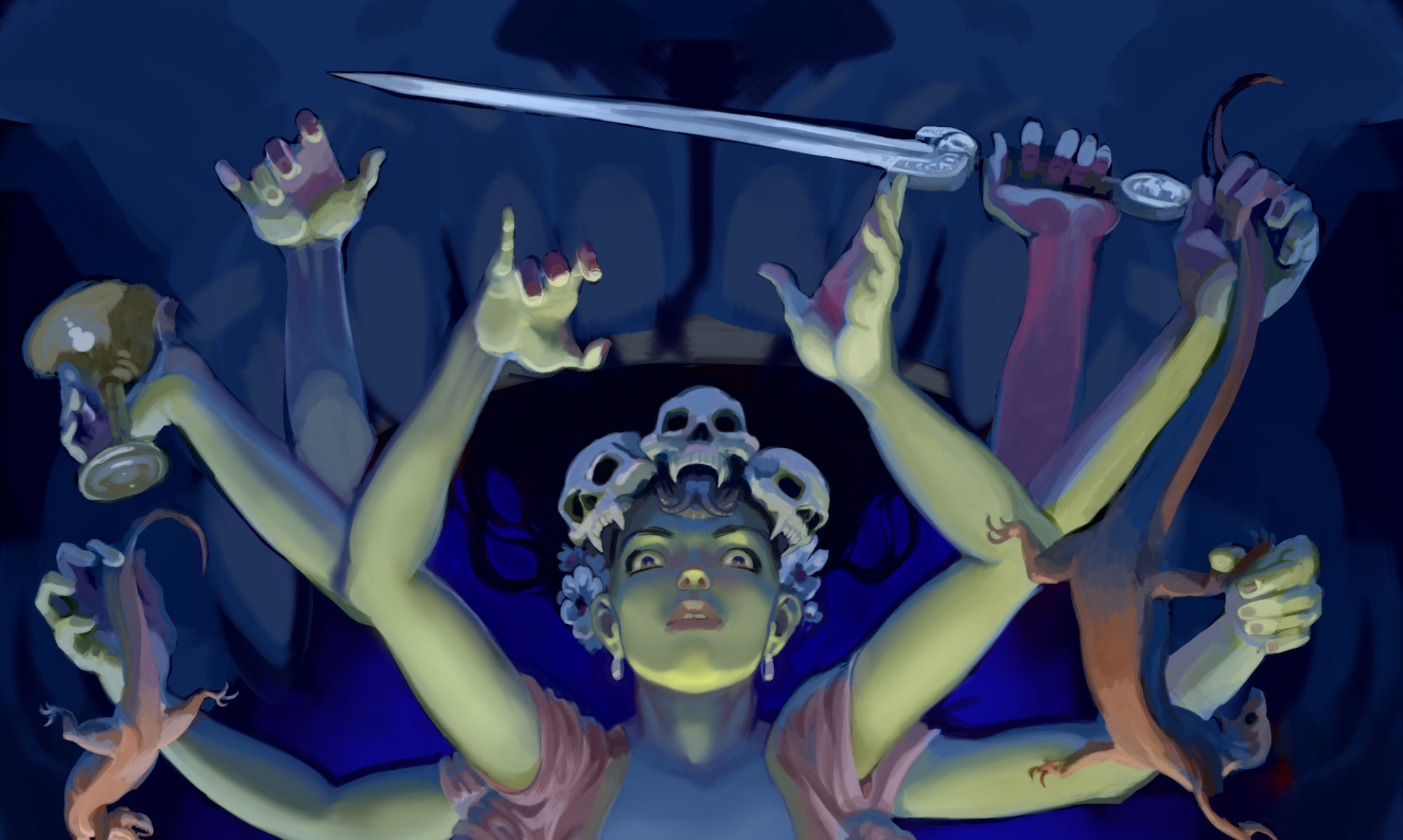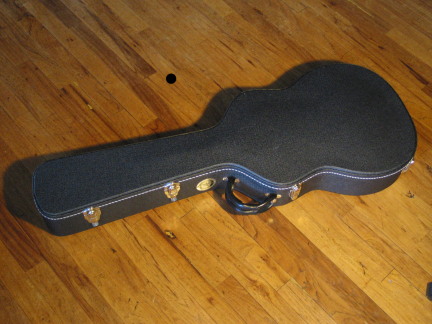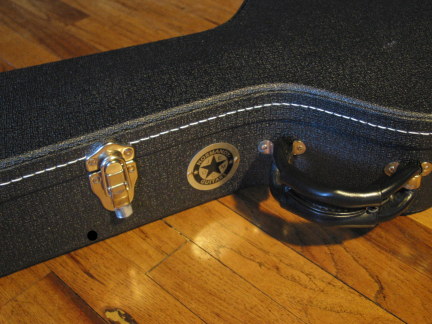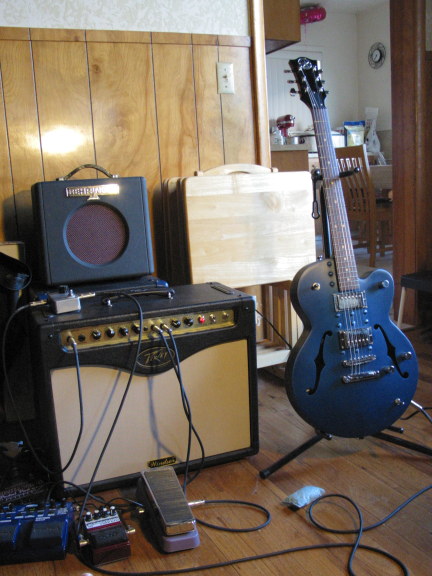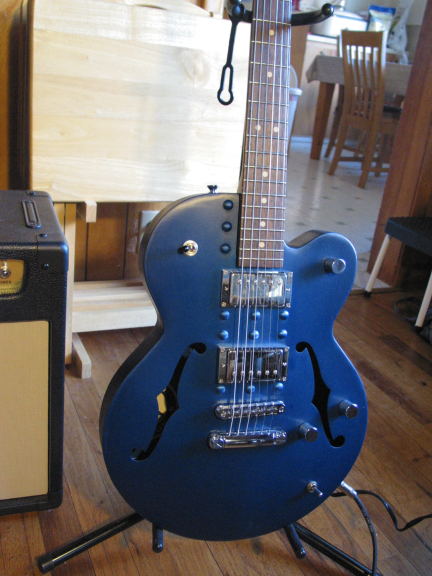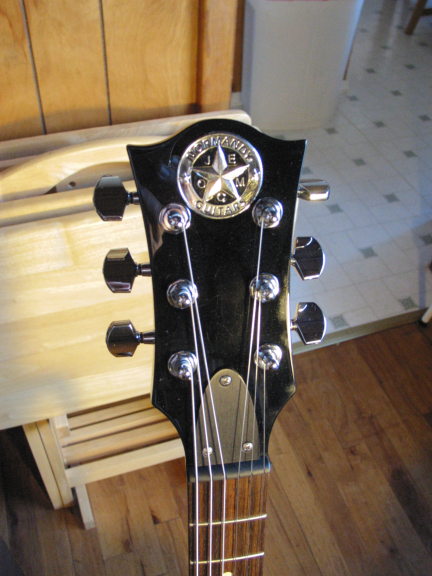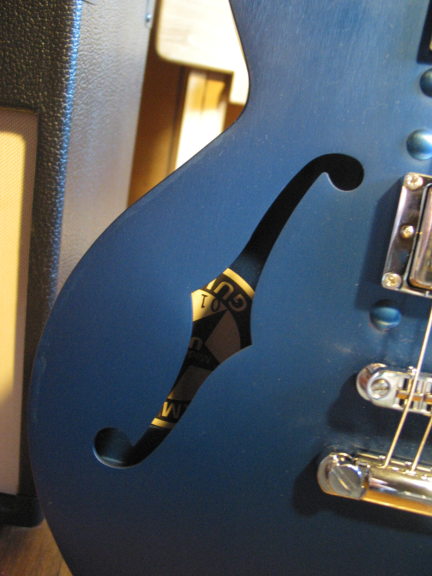
The Trouble with Video Games
Game Retail is screwed up in so many ways. Buying used games works out if you’re interested in titles that sell well initially; games that have enough of a marketing push behind them to motivate a large number of buyers, in other words, mainstream games.
If you want a copy of Madden or Halo used, you’ll have plenty to choose from. But say you’re looking for a game that’s a little more unusual, or merely produced by a studio whose distributor failed to market their game well, if at all? Good luck trying to find one of those games 3 weeks after launch, new OR used. Shelf space is extremely valuable in game stores, and the vast majority of buyers aren’t the type of folks who keep track of previews, reviews and release dates. So the gamer who shows up to buy Call of Duty 2 may never have heard of Godhand, and will certainly never see the one copy sitting in the corner on the bottom shelf. If there’s a copy there at all.
Oh well, their loss, right? Except the result is a system that helps sell games that don’t need help selling, and shuts out all the others. The result in the long run is an industry where creativity and innovation are punished. This is not in my interests as a gamer who prefers new experiences to old ones with updated graphics. Additionally, the Madden and Halo buyers are already gamers. How do we encourage more, different people to take up gaming? There needs to be games that they want to play. Perhaps the mainstream gaming demographic is already saturated; we need different games to attract different demographics. If gaming as an industry doesn’t continue to find new, different consumers, it will remain socially marginalized and stigmatized.
Granted, gaming isn’t nearly the fringe activity it once was, but it still hasn’t gained the ubiquity of film, music or television. I look forward to one day being able to fill my game collection with the equivalent of, say, art house films, and never have to play a “mainstream hollywood blockbuster” ever again.
Games these days are much more mainstream than they used to be, but still have a long way to go before they match the kind of ubiquity and variety that you find in film, music, or television. Personally, I look forward to the day when I have the kind of variety of experience available when I game that I do when I listen to music or watch a dvd.
To that end, I think used video games are a good thing. I also think that pirating games is a good thing, though of course not necessarily to the designer.
I once was a penniless but avid gamer. Used games, and yes pirated games as well kept me a gamer, when my alternative was not gaming at all, or only gaming around Christmas and my birthday. Lots of folks pirate or buy used when they have the means to buy new, but I’d rather not throw out the baby with the bathwater. I want to see more people game, and more people try games that they may not be sure about– sure enough to pay full price new for. I want to see unusual games sell well, and they won’t until people put down their Madden or Halo and give it a try. Most folks don’t want to gamble their $60 on a game they don’t know they’ll like. (We’ve all seen the GameFly commercials, right?)
However, I have friends in the game industry. So buying used games feels a lot like stealing from them. Fortunately, I have a job, so I can afford to buy new, and I can afford to “vote with my dollar” to encourage designers to design and publishers to publish the kind of games I want to play.
So yes, buy used, even from a company as nasty as Wal-Mart. Pirate games if you have to. At least occasionally by a new game, to support your favorite developer. As long as more people play more games, our favorite hobby can only get better.
Postscript: Worrying about ecological effects of shipping & handling from Amazon is a moot point. After all, wasn’t the game you bought at Wal-Mart shipped to that store? If you’re wanting to reduce your footprint, downloading the game probably has less impact on the environment. There’s also less waste in terms of packaging. But of course, if you’re using electricity, you’re contributing to ecological harm (where does your electricity come from?)
Zombies!
The Walking Dead are the classic movie monsters I was most frightened of as a child. Ever since the nightmares I had after studying pictures of Tutankhamun’s dessicated mug when I was 7, I’ve been fascinated by zombies. You may have noticed that shamblers are experiencing a sort of renaissance in pop culture. Really, they never went away, but particularly in video games, there are more zombie games now than ever. And I love it. To be honest I’m a little surprised I’m not bored with the idea of shooting zombies by now. But almost every night I find myself playing zombie video games.
These aren’t actually zombies, rather they’re mummies from Palermo. I used some of the magnificent photos here as reference. Mummies are fascinating to me as well, and they’re full of little details you can use to make your zombies a little more life- err, deathlike.

Ghost

Drought
We have cats. Have had ’em for about a year now. Cats have hair. Lots of hair. It gets everywhere. Particularly into my paintings, sticking to acrylics and oils, anything that stays sticky for at least 30 seconds. I’ve tried vacuuming (the house and the cats), different ventilation/filtration approaches. Just like entropy, cat hair is inevitable and everywhere.
So watercolors it is, then. The media I most neglected in art school. My own damn fault really, we had some teachers who were absolutely amazing with the medium. Me, I’ve got a lot to learn. Here’s a couple of versions of an illustration, with me experimenting. Watercolors and sumi ink.
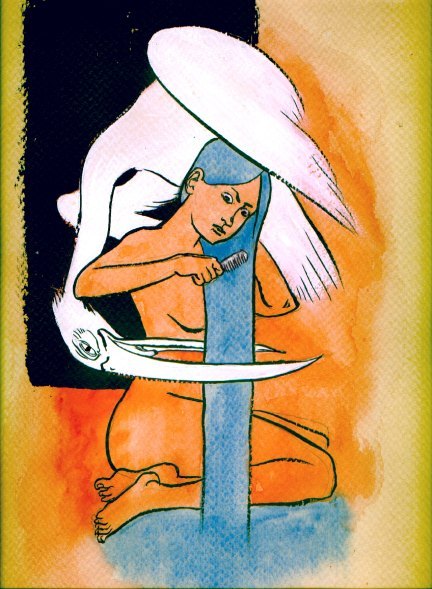
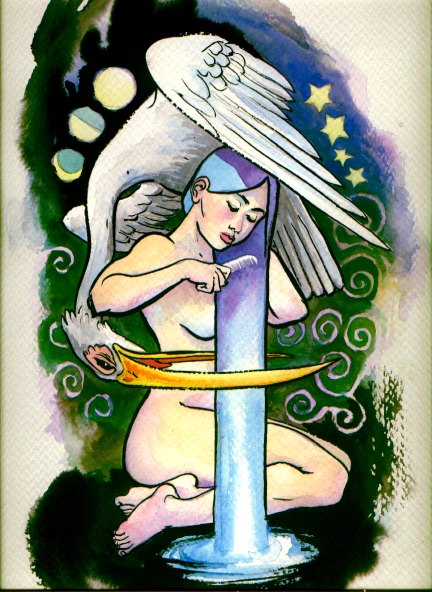
The Blue Bomber
A couple of months ago I leveled up and worked enough hours for Normandy Guitars to earn my own. I chose a Blue Anodized Hardtail. The blue finish has been discontinued due to its difficulty to consistently apply, so mine is one of only 4 blue Normandy archtops out there. It’s a great axe, with a booming voice with a wide range– it sounds like a bassy Les Paul at the neck pickup, and has a drawling twang like a Tele at the bridge. Maple neck with rosewood top, with a profile that’s slightly on the heavy side of average thickness. It feels fast and comfortable. I’m thrilled with this thing, and decided to continue billing Normandy for credit– Jim’s working on another design that I’m really excited about, and he has a V that’s beautiful and balanced. Here are some pictures.
The guitars come with a custom case made by TKL. They’re very well made.
That’s my 30W Peavey Windsor. I love this amp.
My guitar teacher calls the badge on the headstock a “belt buckle.”
Where to Start? Fallout 1
The first 2 Fallouts are among my most favorite games of all time. I can talk about them for hours, because of their depth, creativity, freedom, irony and mostly, how they let me feel like I could be anything I wanted within the world they created.
I’ll spare you that, though. Maybe some other time. I’ve got a friend or two who are just picking up the almost 12-year-old game now (available for about US$6 at www.gog.com), and I have some advice for them. Fallout can seem a little unfriendly at first. I remember being devoured by rats (the lowliest creatures in the game) several times before I even made my way to the wasteland proper when I first played. It’s a side effect of having a game that allows you to make any sort of character you want, who can go anywhere they want in a vast world. It’s very easy to create a character that is ill-suited for wasteland survival, at least before the player has a handle on the gameplay. So below are a few pointers that might help first-time wastelanders get started, get their feet wet, and see the possibilities open to them for more advanced and complicated approaches to the game.
The general points I think beginners should keep in mind:
– Expect to play several characters, that will not make it all the way, if very far at all.
– Don’t try to complete every quest you encounter. Do the ones your character is capable of. In other words, roleplay.
– Create characters that are specialists. One or two strong skills to live by that get the majority of your skill points. Better to be one-sided than average at everything.
– Don’t be afraid to have a flawed character. Most perks have 2 edges. This can make the game great fun, if you’re not afraid to take a little risk.
– Don’t tackle the same sidequests with each character. You’ll just get bored.
– Cowardice is essential; running away is often better than fighting. (At least until you’ve got that Power Armor!)
In most games we’re used to being the Hero: the Archetypal badass who can defeat legions of marines with only a crowbar. And this you can become in Fallout. But you have to start somewhere, and everybody starts out a soft, wet behind the ears vault dweller, with only a crappy pistol and a jumpsuit. From humble beginnings, right?
Building your first characters
I’ve never used the pre-fab characters in Fallout, so I don’t know if they’re useful or not. I don’t see the point in them in a game like this that offers so many choices in rolling your own.
– Decide how you’re going to want to defend yourself. You’ve heard that you can talk your way out of almost anything in the game, if your attributes and skills are high enough? Yeah, well rats don’t talk. And you’re wet behind the ears, remember? Your skills ain’t gonna be too high at first. So pick a combat skill. Don’t pick Big Guns, Explosives or Energy weapons, you won’t find any of those for a while. So, Melee, Unarmed, Thrown or Small Weapons (my favorite). Each skill is modified by 2 Attributes (click on the skill in the menu, and the info panel will tell you which). Those are the 2 attributes you’re going to want to pump.
– Attributes: Pump the 2 attributes that affect your chosen combat skill to 7 or 8. You may have to reduce another attribute to get the points you’ll need. CHA is the most commonly reduced attribute. DO NOT REDUCE LUCK TO LESS THAN 4. Unless you enjoy critical misses. I do not. I recommend reducing INT and CHA, and even touching LK up a little. Most folks don’t think middling LK scores affect the game much, but a head start on luck now can be useful much later when you’re able to modify some of your attributes.
– Tag Skills: Obviously, one of your tag skills should be the combat skill I mentioned above. The other 2 should be skills you intend to use frequently– this means for a starting character, Outdoorsman and the other combat skills and Barter are on your short list.
Pure Voodoo: Normandy Guitars
Guitarists are a notoriously conservative lot. Innovative ideas in guitar design generally don’t meet a warm reception. The most popular guitars are styled after 40-year old designs, and materials haven’t changed much. So a new company like Normandy Guitars has an uphill battle. Normandy’s necks are still wood, but the bodies are made from aircraft-grade aluminum. That’s kind of a big deal in the guitar market. But so far, Normandy Guitars is doing well, selling around the world, and online at Amazon and Musician’s Friend. Their guitars sound great in their own right, a very classic well rounded warm sound, nothing as outlandish as one might expect given the materials. And they are absolutely gorgeous. You can see that they’re going with classic styling, in part to keep their foot in the door with the conservative majority of the guitar-buying market.
Jim Normandy, the founder, lives in my town, and I managed to talk my way into helping out with some of the company’s design needs. I’ve done some ads for them, and a poster, which I’m quite proud of.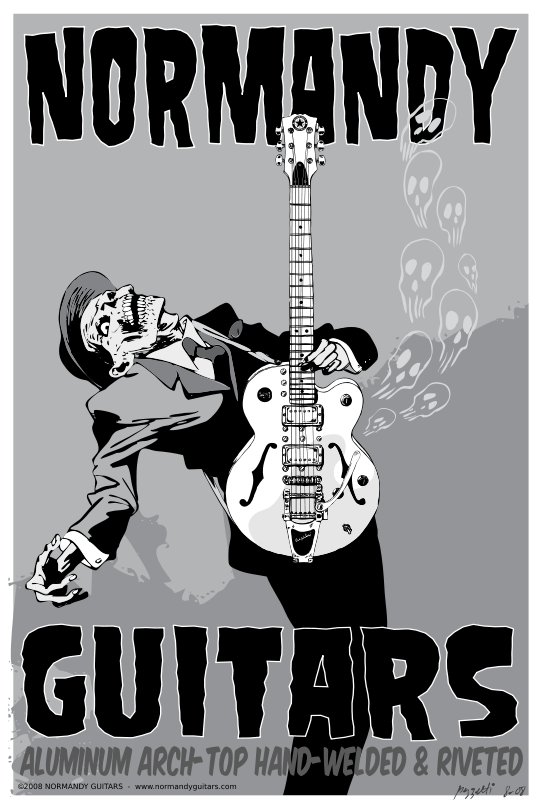
You can download a high quality pdf from Normandy here. Mine’s the one on the right.
GIMP
I’ve been working with graphics software for a while now. In prepress, I get files created by all sorts of people, in all sorts of ways, from all sorts of packages. Lots of people choose software packages and defend their choices vigorously, much like folks defend their politics. They have all sorts of reasons for why theirs is the best, but in the end it’s simply the package that they are familiar with, and have shelled out for. But it really doesn’t matter. I’ve seen people create amazing things with the worst software, and absolute crap with the best. It’s a tool, not a lifestyle.
That’s why I became interested in the GIMP, and Inkscape. These are free, open source graphics software packages. GIMP handles raster graphics, Inkscape works with vector. I simply do not want to shell out for Creative Suite, or the machine I would need to run it. I run Ubuntu on an old single core P4. I dislike Microsoft’s products and practices, and dislike Apple’s prices and practices (I hate Wacom’s patent b.s. too, but have had trouble getting competing products to work under linux, and I hate having heavy batteries in my stylus).
Both GIMP and Inkscape have met my needs so far. I haven’t pushed them too hard yet, but I’m getting there. The biggest problem is unfamiliarity with the interface. But this is a problem with switching software regardless of the price you paid for it. It’s a bit like trying to find a spoon in an unfamiliar kitchen. Lots of drawers, which one do they keep them in? A little determination, time and a helpfile and you can get past that.
How Does Your Garden Grow?
This one I made last spring, for my sister’s birthday. She’s been cultivating a garden that has become quite impressive. I’m considering the same, we’ve got some space here in the yard that might be useful for vegetable production. This is a pencil drawing colored in the GIMP, which I’ve been experimenting with quite a bit lately. So far it’s met all of my needs. I’m using a Wacom Bamboo tablet, which is the sort of econo-model that wacom offers. It doesn’t have tilt functionality, but it’s sensitivity and resolution are just fine.

